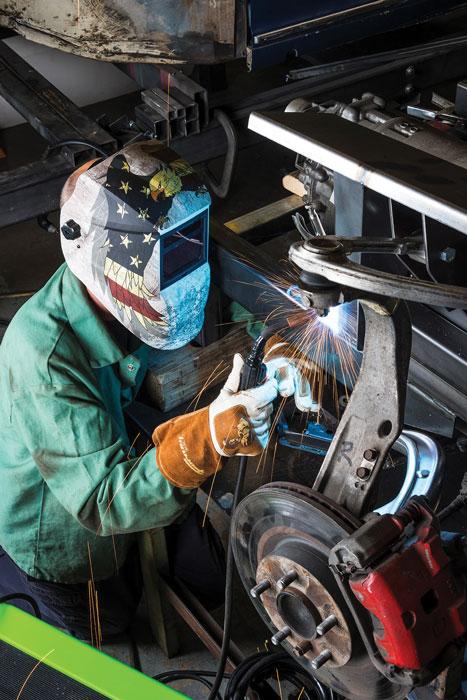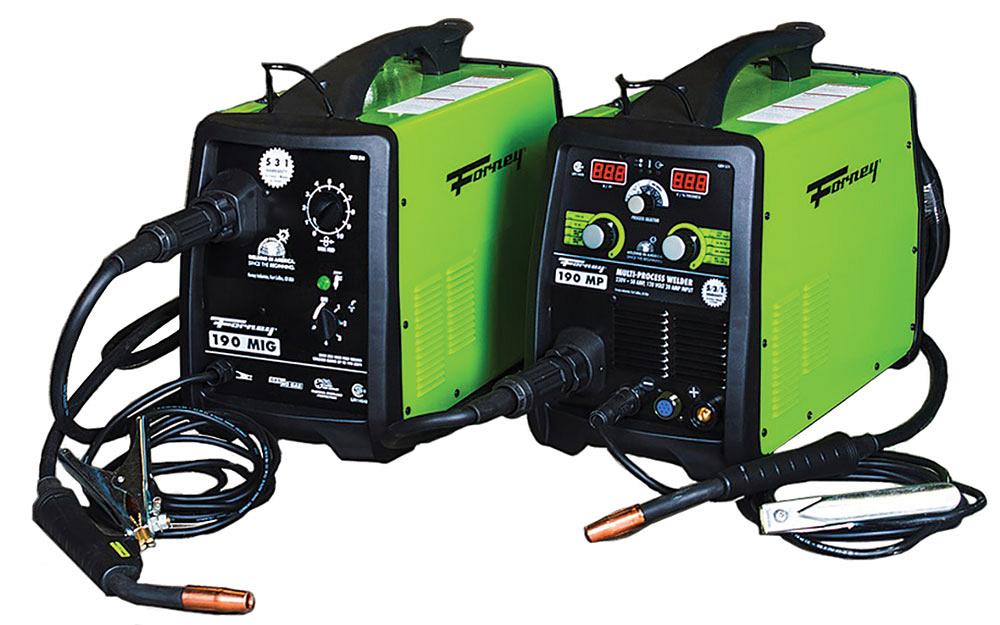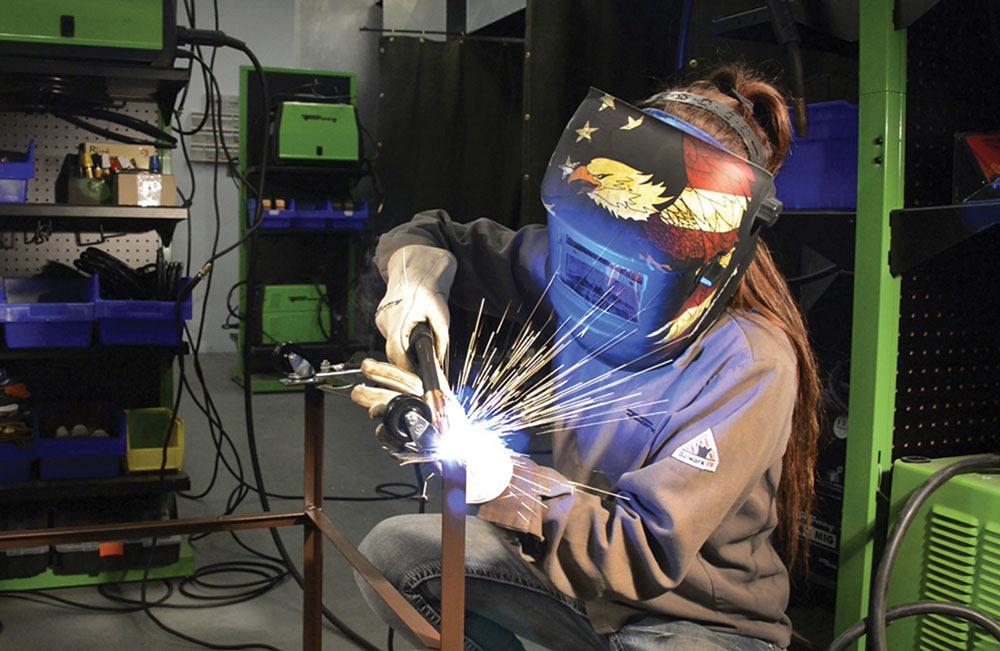Director of Engineering
- FMA
- The Fabricator
- FABTECH
- Canadian Metalworking
Categories
- Additive Manufacturing
- Aluminum Welding
- Arc Welding
- Assembly and Joining
- Automation and Robotics
- Bending and Forming
- Consumables
- Cutting and Weld Prep
- Electric Vehicles
- En Español
- Finishing
- Hydroforming
- Laser Cutting
- Laser Welding
- Machining
- Manufacturing Software
- Materials Handling
- Metals/Materials
- Oxyfuel Cutting
- Plasma Cutting
- Power Tools
- Punching and Other Holemaking
- Roll Forming
- Safety
- Sawing
- Shearing
- Shop Management
- Testing and Measuring
- Tube and Pipe Fabrication
- Tube and Pipe Production
- Waterjet Cutting
Industry Directory
Webcasts
Podcasts
FAB 40
Advertise
Subscribe
Account Login
Search
The great debate: inverter vs transformer welding
What’s your preference?
- By Jason Mahugh
- Updated October 25, 2023
- May 8, 2017
- Article
- Arc Welding
If you want to start a civil war in welding, just ask a group of welding experts which is better, an inverter or a transformer machine. The short answer to this question is, “It depends.” The long answer, however, is a lively debate surrounding pros, cons, and specific applications of the machines.
The first transformers were developed when electricity became commonplace in the late 1800s. Soon after, in the early 1900s, it was discovered that transformers could be used in the arc welding process, which was in its infancy at that time. It took a number of years to work through various electrical designs to be able to control the arc, which also brought about the need to create covered (or coated) arc welding electrodes, a process that is commonly referred to as shielded metal arc welding (SMAW) or stick welding.
During World War I, welding underwent significant research and development because of how heavily it was used in steel ship and tank construction. Keep in mind that before welding, steel was joined with rivets, forging, and gas welding. During the 1920s and 1930s, arc welding and transformer welding power supplies became commonplace, and as the power grid grew, arc welding grew with it. By the end of World War II, the U.S. was experiencing a welding and manufacturing boom. From the 1930s to the 1980s, almost all arc welding machines produced were transformer-based, giving engineers and manufacturers more than 50 years to perfect the design and create incredibly reliable arc welding machines.
The 1980s ushered in a new era of technology that centered on electronics, coinciding with the growing popularity of personal computers. As the electronics and software industry grew, engineers soon realized that software-controlled inverters could be used to weld, opening up a new world of possibilities. As is the case with most new technologies, inverter-based welding power sources had its share of growing pains during the 1990s. Many early machines were plagued with reliability problems and were at the center of hot debates regarding user interfaces, controls, heat dissipation, and moisture concerns. These issues are still at the core of the inverter adoption debate. But by the early 2000s, these units were becoming popular because of their versatility and ability to control the arc.
Inverter Welding vs Welding Transformers
So, how exactly do transformers and inverters stack up against one another? Sure, inverters are certainly considered the industry standard nowadays, but some welders still prefer transformers. Let’s compare.
Reliability. This is a hotly contested issue for those who engage in the transformer versus inverter debate. For nearly a century, transformer machines underwent extensive R&D to create reliable and rugged machines. By comparison, inverter machines have had only a fraction of that time—roughly 30 years, give or take. The argument can be made that transformer machines are more reliable than the best inverter machines, but it is worth noting that the gap between the two has narrowed considerably in recent years. Gone are the days of the 1990s when failures on inverters were the stuff of nightmares.
Versatility. There was a time when transformer technology combined with inverter technology to create what was thought to be the ultimate welding machine. However, this technology was overly complicated and expensive. It soon became obvious to engineers that the advances in software and electronics were opening up a new challenge in the world of welding. If you have any doubt about this, think about the first computer or cellphone you owned and compare it to what you have today. That same transition occurred in the evolution of welding machines. You now can buy inverter welding machines on which you can adjust just about any electrical variable imaginable with software to create unmatched versatility. Inverter machines are also much lighter and more portable than transformer machines. The edge goes to inverters regarding versatility.
Arc Quality. When discussing welding machines, we can’t ignore arc performance and the welds produced. If you are the type of welder who welds only on mild steel all day, every day, you won’t need to look past a transformer machine. However, we live in a welding world that demands weld perfection in any position and on any material. In this demanding world, inverters really shine.
Since inverters can be programmed to do just about anything, we now see advanced pulse gas metal arc welding (GMAW) performing as well as high-skilled gas tungsten arc welding (GTAW). There is a world opening up to us with software and advanced electronics that have really changed what a welding machine can do. It even makes a mediocre welder like myself look pretty good at times. I give inverter machines a thumbs up for weld quality and innovation, but I still like to keep it simple for steel.
Cost. The last variable usually discussed is price. In the past inverter machines were incredibly expensive. The high price was due to component costs, specialized manufacturing costs, and engineering costs. Those costs have changed a lot over the last 15 years as inverters have entered the world of high-volume electronics manufacturing. Inverters are starting to become less expensive than transformer-based machines, even though they are significantly more complex.

The inverter-based power source is one of the welding industry’s most important technology advances of the last two decades. But before that the welding was ruled by transformer machines. So how do they compare? Is there still a place for the old amongst the new?
When considering a machine’s cost, be sure to factor in the following:
- Initial purchase cost. At this time, the initial cost investment for the two is probably about even.
- Power (electricity consumption). In general, inverters use less electricity than transformers.
- Maintenance costs. After the warranty period ends, it costs more to maintain an inverter than it does a transformer.
- Downtime costs. This is up for debate because these costs really depend on how the machine is being used. Certain applications and environments are more problematic for inverter machines and contribute to machine failures or the need for repairs. For instance, gouging with an inverter, while possible, is generally not recommended and puts a significant amount of stress on certain inverter components, which can create failures. Dirty, dusty, and high-moisture environments can also create inverter board failures. While certain manufacturing and design changes help inverters deal with less-than-optimal conditions, they still are not as reliable as transformer machines for certain applications.
- Quality of weld costs. There is a debate whether some of the quality and productivity improvements ascribed to inverter machines are real. For instance, many claim that pulsing improves productivity, but others claim pulsing can lead to lack of fusion. There is truth to both sides of the debate. Some claim that pulsed GMAW can replace GTAW, and maybe that’s true for certain applications, but a highly skilled TIG welder is still the gold standard for high-quality welds. In many cases, the software and number of variables that can be changed with inverter machines have outpaced the general welding knowledge and how to best implement the technology improvements.
All of this boils down to whether transformer machines or inverter machines make more sense for a particular application. The following chart is a generalized opinion based on experience and lots of discussion.
Inverter welding machines have changed a lot in the last 15 years. They continue to improve in both performance and cost, but that doesn’t mean we need to dig a grave for transformer welding machines, as they still have an important place in our industry. In the end, it comes down to a personal weighted decision based on many factors. At the end of the day, the choice is yours.
Photos courtesy of Forney Industries, Fort Collins, Colo.
About the Author
About the Publication
subscribe now

The Welder, formerly known as Practical Welding Today, is a showcase of the real people who make the products we use and work with every day. This magazine has served the welding community in North America well for more than 20 years.
start your free subscription- Stay connected from anywhere

Easily access valuable industry resources now with full access to the digital edition of The Fabricator.

Easily access valuable industry resources now with full access to the digital edition of The Welder.

Easily access valuable industry resources now with full access to the digital edition of The Tube and Pipe Journal.
- Podcasting
- Podcast:
- The Fabricator Podcast
- Published:
- 04/16/2024
- Running Time:
- 63:29
In this episode of The Fabricator Podcast, Caleb Chamberlain, co-founder and CEO of OSH Cut, discusses his company’s...
- Industry Events
16th Annual Safety Conference
- April 30 - May 1, 2024
- Elgin,
Pipe and Tube Conference
- May 21 - 22, 2024
- Omaha, NE
World-Class Roll Forming Workshop
- June 5 - 6, 2024
- Louisville, KY
Advanced Laser Application Workshop
- June 25 - 27, 2024
- Novi, MI

































